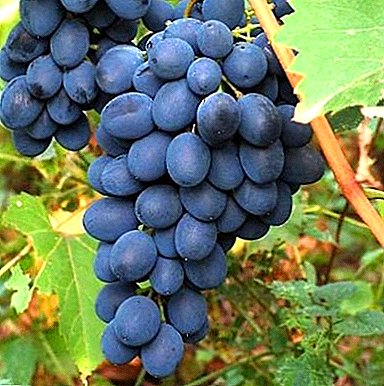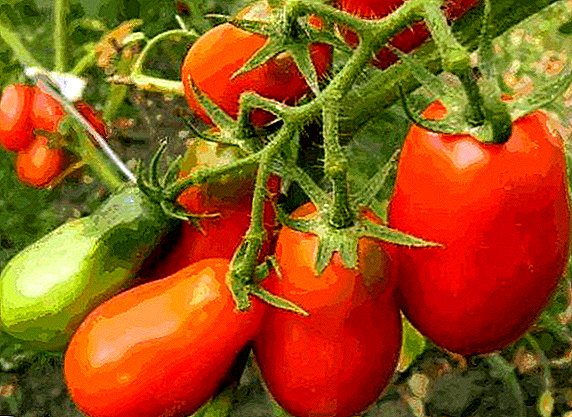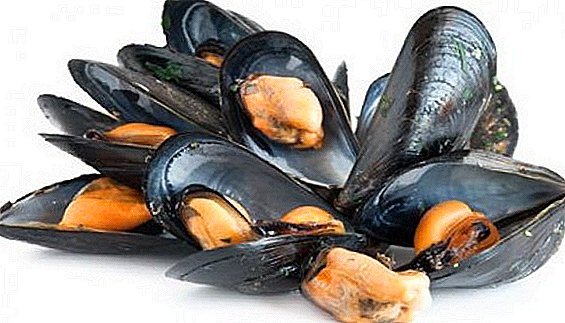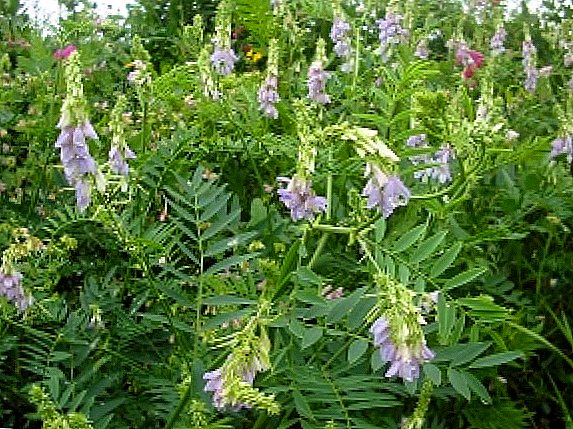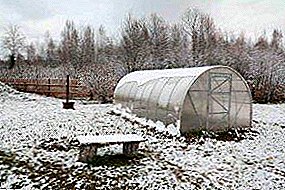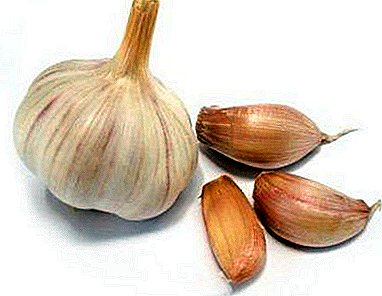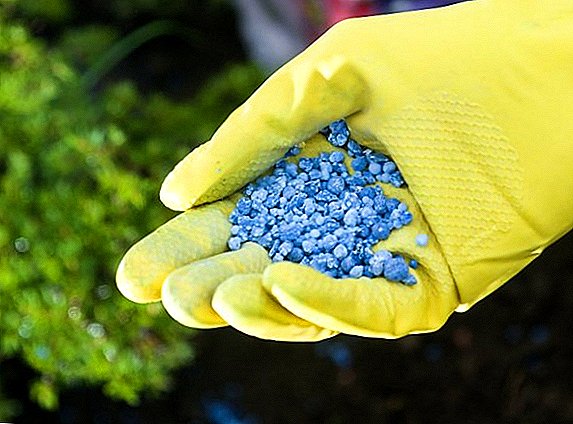 Mineral fertilizers differ in high concentration of nutrients. The composition of mineral fertilizers may be different, and depending on the desired nutrient is divided into complex and simple.
Mineral fertilizers differ in high concentration of nutrients. The composition of mineral fertilizers may be different, and depending on the desired nutrient is divided into complex and simple.
Important! Fertilizers should be used in small quantities, while observing the level of nutrients in the soil. In this case, there will be no harm from their chemical composition.
Today, the chemical industry produces mineral fertilizers of the following types:
- liquid,
- dry
- unilateral,
- complex.
If you choose the right drug and adhere to the right proportions, you can not only feed the plants, but also solve the problems encountered in their development.
Mineral fertilizers
 Many gardeners and gardeners know what mineral fertilizers are. These include compounds of inorganic nature, containing all the nutrients necessary for plants. Such supplements and fertilizers will help to achieve soil fertility and grow a good harvest. Liquid mineral fertilizers, which are mainly used in small garden and garden plots, have become popular today. There is also a complete mineral fertilizer, which includes three important nutrients for plants - it is nitrogen, phosphorus, potassium. But it is worth remembering that the use of mineral fertilizers requires a careful approach, although with organic matter (with the wrong dose calculation for application), it is possible to cause a lot of damage to the earth and plants. Therefore, let's take a closer look at the characteristics of mineral fertilizers, their types and characteristics, and also find out how to use them correctly.
Many gardeners and gardeners know what mineral fertilizers are. These include compounds of inorganic nature, containing all the nutrients necessary for plants. Such supplements and fertilizers will help to achieve soil fertility and grow a good harvest. Liquid mineral fertilizers, which are mainly used in small garden and garden plots, have become popular today. There is also a complete mineral fertilizer, which includes three important nutrients for plants - it is nitrogen, phosphorus, potassium. But it is worth remembering that the use of mineral fertilizers requires a careful approach, although with organic matter (with the wrong dose calculation for application), it is possible to cause a lot of damage to the earth and plants. Therefore, let's take a closer look at the characteristics of mineral fertilizers, their types and characteristics, and also find out how to use them correctly.
Types of mineral fertilizers
As we have already noted, mineral fertilizers are divided into: nitrogen, potash and phosphate. This is due to the fact that these three elements are leading in the field of nutrition and affect the growth and development of plants. Nitrogen, phosphorus and potassium are the basis, which is what mineral fertilizers are made of. They are considered the basis for the harmonious development of the plant world, and their deficiency can lead not only to poor growth but also to the death of plants.
Nitrogen
 In the spring, there may be a lack of nitrogen in the soil. This is manifested in the fact that plants slow down or stop growing at all. This problem can be recognized by pale foliage, small leaves and weak shoots. Tomatoes, potatoes, strawberries and apples actively react to the lack of nitrogen in the soil. The most popular nitrogen fertilizers are nitrate and urea. This group includes: calcium sulfur, ammonium sulphate, sodium nitrate, azofok, ammophos, nitroammophoska and diammonium phosphate. They have different effects on culture and soil. Urea acidifies the soil, nitrate - a good effect on the growth of beets, ammonia - on the growth of cucumbers, onions, lettuce and cauliflower.
In the spring, there may be a lack of nitrogen in the soil. This is manifested in the fact that plants slow down or stop growing at all. This problem can be recognized by pale foliage, small leaves and weak shoots. Tomatoes, potatoes, strawberries and apples actively react to the lack of nitrogen in the soil. The most popular nitrogen fertilizers are nitrate and urea. This group includes: calcium sulfur, ammonium sulphate, sodium nitrate, azofok, ammophos, nitroammophoska and diammonium phosphate. They have different effects on culture and soil. Urea acidifies the soil, nitrate - a good effect on the growth of beets, ammonia - on the growth of cucumbers, onions, lettuce and cauliflower.
Did you know? When using ammonium nitrate should be aware of its explosiveness. Because of this, it is not sold to individuals for the prevention of accidents.
It should be remembered that nitrogen fertilizers are the most dangerous of all mineral fertilizers. When they are abundant, plants accumulate in their tissues an excessive amount of nitrates. But if you apply nitrogen fertilizers very carefully, depending on the composition of the soil, the crop being fed and the type of fertilizer, you can easily achieve higher yields. Also, you should not make these fertilizers in the fall, because the rains just wash it before spring planting. Fertilization rates (urea): vegetables -5-12 g / m² (with direct application of mineral fertilizers), trees and shrubs -10-20 g / m², tomatoes and beets -20 g / m².
Phosphoric
 Phosphate fertilizers is a mineral plant food that contains 20% of phosphoric anhydride in its composition. Superphosphate is considered one of the best mineral fertilizers for all types of soil that need this element. It should be made as a top dressing in the process of development and growth of plants with a high moisture content in the soil.
Phosphate fertilizers is a mineral plant food that contains 20% of phosphoric anhydride in its composition. Superphosphate is considered one of the best mineral fertilizers for all types of soil that need this element. It should be made as a top dressing in the process of development and growth of plants with a high moisture content in the soil.
Did you know? Often gardeners and gardeners use double superphosphate in which the concentration of useful substances is much higher. It does not contain useless CaSO4 used in simple superphosphate and is more economical.
Another type of mineral fertilizer in this category is phosphoric flour. It is used on acidic soils for all fruit, vegetable and cereal crops. Flour helps in the fight against pests and diseases due to increased plant immunity. Fertilizer application rates: superphosphate 0.5 centner per 1 hectare, 3.5 centner per 1 hectare.
Potash
 Apply potash mineral fertilizers in the fall, while digging. This fertilizer is well suited for potatoes, beets and all cereals. Potassium sulfate or potassium sulfate is suitable for feeding plants that are deficient in potassium. It does not contain various impurities such as chlorine, sodium and magnesium. Suitable for melon crops, especially during the formation of the fruit.
Apply potash mineral fertilizers in the fall, while digging. This fertilizer is well suited for potatoes, beets and all cereals. Potassium sulfate or potassium sulfate is suitable for feeding plants that are deficient in potassium. It does not contain various impurities such as chlorine, sodium and magnesium. Suitable for melon crops, especially during the formation of the fruit.
Potassium salt consists of two chloride elements -KCl + NaCl. Substance is used in many agro-industrial complexes. It is made in the spring of almost all types of berry crops of 20 g under a bush. In autumn, the fertilizer is spread on the surface before plowing 150-200 g / m². Fertilization rates: potassium chloride 20-25 g per 1 m²; potassium sulfate -25-30 g / m²
Complex
Complex fertilizers are a nutrient containing several necessary chemical elements at once. They are obtained through the process of chemical interaction of the starting components, with the result that they can be double (nitrogen-potassium, nitrogen-phosphate, nitrogen-potassium) and ternary (nitrogen-phosphorus-potassium). According to the production method, they are distinguished: complex mineral fertilizers, difficult-mixed or combined and mixed.
- Ammophos is a phosphorus-nitrogen fertilizer that contains nitrogen and phosphorus (12:52 ratio). This mineral fertilizer is easily absorbed by plants, suitable for potatoes and all vegetable crops.
- Diammof-phosphorus-nitrogen fertilizer containing 20% nitrogen and 51% of the philosopher. It is well soluble in water and does not contain excess ballast elements.
- Azofoska is an effective granular fertilizer containing nitrogen, phosphorus and potassium. Provides high yields, non-toxic and can be stored for a long period.
- Nitrogen-phosphorus-potassium fertilizer is a complex fertilizer in granules. It is used for all crops, as its nutrients are easily absorbed by plants. Suitable as a complex fertilizer when digging in the spring.
Many agro complexes use precisely complex mineral fertilizers to achieve the best result.
Hard mixed
 Complicated fertilizers include such compounds as nitrophobia and nitrophobia. They are obtained by processing phosphorite or iapatite. By adding different desired components, carbonate nitrophosphate and phosphoric nitrophosphate are formed. They are applied as the main fertilizer before sowing, in rows and holes when sowing, often used as a top dressing. Carboammophos-fertilizers containing nitrogen in the amide and ammonia forms. Kristalin and solvent are used for protected ground. This is a crystalline granular fertilizer, well soluble in water. The most common fertilizer ratio is -N: P: K - 20:16:10. Complex mixed complexes are used in large agricultural enterprises where large areas need to be covered before planting crops.
Complicated fertilizers include such compounds as nitrophobia and nitrophobia. They are obtained by processing phosphorite or iapatite. By adding different desired components, carbonate nitrophosphate and phosphoric nitrophosphate are formed. They are applied as the main fertilizer before sowing, in rows and holes when sowing, often used as a top dressing. Carboammophos-fertilizers containing nitrogen in the amide and ammonia forms. Kristalin and solvent are used for protected ground. This is a crystalline granular fertilizer, well soluble in water. The most common fertilizer ratio is -N: P: K - 20:16:10. Complex mixed complexes are used in large agricultural enterprises where large areas need to be covered before planting crops.
Microfertilizers
 Microfertilizers are fertilizing and complexes containing trace elements in a form that is accessible to plants. Often these substances can be found in the form of: liquid mineral fertilizers, crystals, powder. For convenient use, micronutrient fertilizers are produced in the form of complexes with various microelements. They have a better effect on the cultivated plant, protect against pests and diseases, and increase yields.
Microfertilizers are fertilizing and complexes containing trace elements in a form that is accessible to plants. Often these substances can be found in the form of: liquid mineral fertilizers, crystals, powder. For convenient use, micronutrient fertilizers are produced in the form of complexes with various microelements. They have a better effect on the cultivated plant, protect against pests and diseases, and increase yields.
The most popular fertilizers are:
- "Master" is used as a mineral fertilizer for flowers. Contains: Zn, Cu, Mn, Fe.
- "Sizam" is suitable for growing cabbage. Significantly increases yields and protects against pests.
- "Oracle" for feeding berry bushes, flowers and lawns. Contains etidronovuyu acid, which regulates the movement of fluid in plant cells.
In general, micronutrient fertilizers are used separately, which makes it possible to precisely calculate the dosage. In this case, the plants will receive the necessary nutrition, without additional and extra chemicals.
Application of mineral fertilizers, general tips
It should be understood that mineral fertilizers are used in two main cases: as the main fertilizer (for soil digging) and as a spring-summer top dressing. Each option has its own nuances, but there are also basic principles that cannot be violated.
Safety rules:
- do not use dishes for cooking in order to dilute fertilizers;
- store fertilizers, best of all, in hermetic packaging;
- immediately before use, after long-term storage, a situation may arise in which the fertilizer compacted, so you need to pass it through a sieve with a diameter of 3-5 mm;
- when fertilizing the soil for a particular crop, it is necessary to familiarize yourself with the requirements and recommendations of the manufacturer, since exceeding the amount of mineral fertilizers in the soil can lead to disastrous consequences;
- It is best to apply the method of laboratory research of the soil on the basis of the results of which it will be possible to use the appropriate fertilizer in the required amount;
- care must be taken to ensure that mineral fertilizing for plants, which is produced through the soil, does not hit the green part;
- better soil fertility can be achieved by alternating mineral fertilizers;
- if mineral fertilizers are applied with organic fertilizers, the dose of the first should be reduced;
- The most practical are granulated fertilizers, which contribute to the autumn digging.
Thus, the correct use of mineral fertilizers and compliance with safety procedures will help to saturate the soil with the necessary trace elements that will contribute to the normal growth and development of plants.
The benefits and harms from the use of mineral fertilizers in the garden
 Mineral fertilizers help to saturate the soil with important elements and increase the yield of the vegetable garden or garden. All supplements that are mineral fertilizers help to maintain plants during the growing season and fruiting. But still, do not forget about the dangers of mineral fertilizers, more precisely about the possibility of improper use and exceeding the dosage.
Mineral fertilizers help to saturate the soil with important elements and increase the yield of the vegetable garden or garden. All supplements that are mineral fertilizers help to maintain plants during the growing season and fruiting. But still, do not forget about the dangers of mineral fertilizers, more precisely about the possibility of improper use and exceeding the dosage.
Important! If you do not comply with the deadline and recommended standards in the use of mineral fertilizers, nitrates can accumulate not only in the soil but also in plants. This can lead to severe poisoning when eating fruit.
Today, most agro-complexes use mineral fertilizers in combination with organic. This allows you to reduce the accumulation of nitrates and reduce the negative effect. Summing up, I would like to note that whatever these mineral fertilizers are, with all the pluses and minuses, their use helps to increase the yield of the crops grown. Therefore, just pay more attention to the correct use of the compositions and do not abuse them for mercenary purposes.



